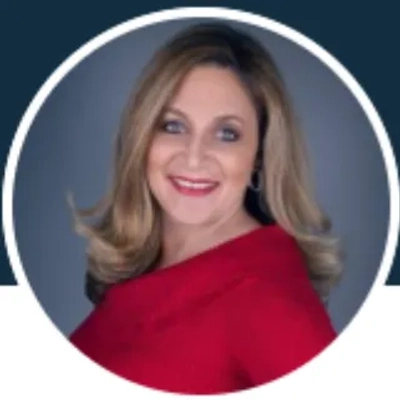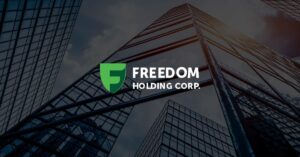Planning for retirement requires more than guesswork, as leading financial experts reveal practical strategies for long-term security. Determining adequate savings involves balancing numerical targets with personal lifestyle goals while creating diversified income streams. This comprehensive guide examines critical factors including tax efficiency, expense management, and protection against healthcare costs that can significantly impact retirement readiness.
- Build Three Independent Income Streams
- Track Expenses with Forensic Precision
- Protect Against Healthcare and Disability Risks
- Focus on Tax Efficiency Over Magic Number
- Balance Numbers with Desired Quality of Life
Build Three Independent Income Streams
After guiding Fortune 500 companies through billion-dollar deals and watching countless executives fumble their retirement timing, I learned the traditional “25x your annual expenses” rule is dangerously incomplete. My comfort threshold became having three separate income streams that could each cover 80% of my living expenses independently.
The breakthrough came from analyzing my client portfolios during the 2008 crisis. I watched retirees with $2M+ nest eggs panic-sell at the bottom because they had no diversification beyond traditional assets. That’s when I developed what I call the “three-pillar test”–if any single pillar disappeared overnight, the other two had to sustain my lifestyle for at least 18 months.
My personal formula: enough precious metals to cover 6 months of expenses (currently about $180K in gold/silver), dividend-paying stocks generating monthly income, and business cash flow. The metals act as my insurance policy during market crashes when other assets correlate to zero.
The 59-year-old executive I mentioned who retired early? She hit her number not when she reached $3.2M, but when her diversified portfolio could generate $8,500 monthly from three different asset classes. That’s the psychological shift–from accumulating a lump sum to building multiple cash flow engines that work independently.

Track Expenses with Forensic Precision
After 15+ years handling corporate financials and helping businesses grow from seed rounds to 10x valuations, I realized retirement planning is about understanding your personal burn rate with forensic precision. Most people guess at their expenses, but I built detailed financial models tracking every category for two full years before setting my target.
The breakthrough came when I was managing cash flow for a client’s business that had seasonal revenue swings of 60%. I realized my retirement needed the same buffer analysis I used for their working capital planning. I calculated my absolute minimum monthly expenses, then multiplied by 36 months as my emergency baseline – not the typical 6-12 months people suggest.
What really sealed my comfort level was applying the same variance analysis I use for client budgets to my own spending patterns. After tracking for 24 months, I found my actual expenses ran 23% higher than my initial projections due to “irregular” costs that happen regularly. Healthcare, home maintenance, and family emergencies aren’t really irregular – they’re just poorly budgeted.
The specific factors that influenced my decision were the same ones I use when advising clients on cash management: maintaining 18 months of fixed costs in liquid savings, plus ensuring my investment income could cover variable expenses even in a down market year.

Protect Against Healthcare and Disability Risks
After helping thousands of clients evaluate their insurance needs over 25 years at Mitchell-Joseph Insurance, I learned retirement planning comes down to one thing: understanding your true risk exposure. Most people focus on accumulation but ignore protection.
My comfort level came when I calculated how much we’d need if either my wife or I couldn’t work due to disability or health issues. Through our agency’s disability insurance cases, I’ve seen too many families lose everything because they planned for market volatility but not income loss. We needed enough to cover 10 years of expenses plus comprehensive health coverage gaps that Medicare won’t touch.
The specific factor that sealed my decision was watching a 58-year-old client who had $1.2M saved get wiped out by his wife’s unexpected cancer treatment. Their high-deductible plan and out-of-network specialists cost them $340K in two years. That’s when I realized our retirement number needed to include a $500K healthcare buffer on top of living expenses.
What really drives my planning is seeing clients who thought they were set at 62 come back needing long-term care insurance quotes at 67. The average policy in our area runs $4,200 annually, but care costs $8,500 monthly. I won’t retire until our assets can handle both scenarios without touching principal.

Focus on Tax Efficiency Over Magic Number
Great question – as someone who’s run an accounting firm for 19 years and helped clients from startups to $100 million companies, I approach retirement differently than most financial advisors suggest.
Instead of focusing on a magic number, I looked at tax efficiency first. Through my business, I can write off meals, mileage, cell phone, internet, and a portion of my house since I operate from home. The average household with a home-based business saves $4,000-$8,000 annually just in taxes – that’s money that compounds over decades without needing to earn it.
My comfort threshold became: how much do I need in tax-advantaged business income to maintain my lifestyle? I realized that staying in the business owner tax system (versus the W-2 employee system) means I keep significantly more of what I earn. When I helped Dr. Kenneth Meisten go from owing $3,300 in taxes to receiving $18,000 back, it hit me – proper tax strategy can be worth more than years of traditional saving.
The key factor was understanding that retirement isn’t just about accumulation, it’s about legal tax optimization. I’d rather have $800K generating business income with massive write-offs than $1.2M in a traditional retirement account getting taxed at ordinary income rates.

Balance Numbers with Desired Quality of Life
I based my retirement savings goal on a mix of practical and personal factors. I calculated my essential monthly expenses, factored in healthcare, and added a buffer for unexpected costs. I also considered the lifestyle I wanted to maintain—like travel and hobbies—rather than just covering the basics. To guide my decision, I used the ’25x rule,’ estimating that I’d need about 25 times my annual expenses saved. Balancing the numbers with my desired quality of life gave me the confidence to know when I’d be financially ready to retire.














